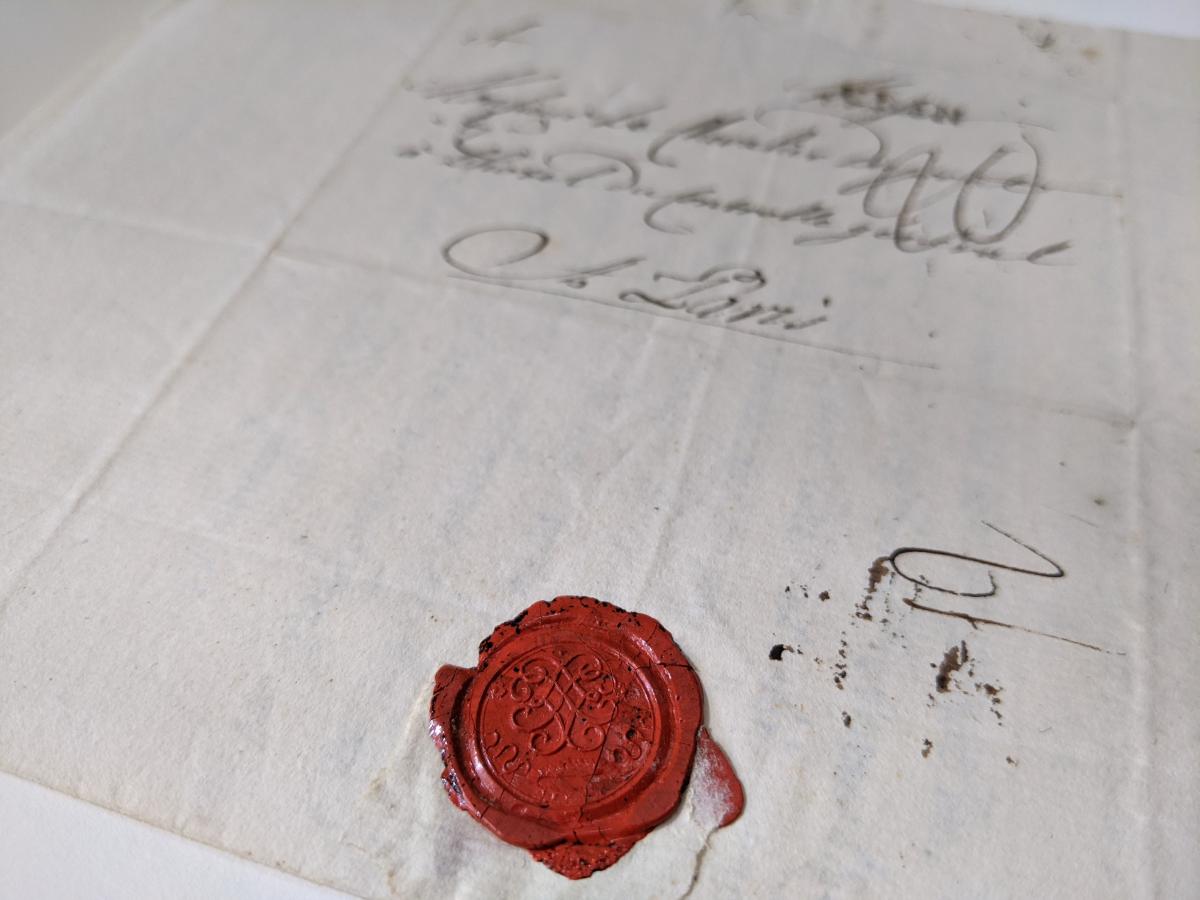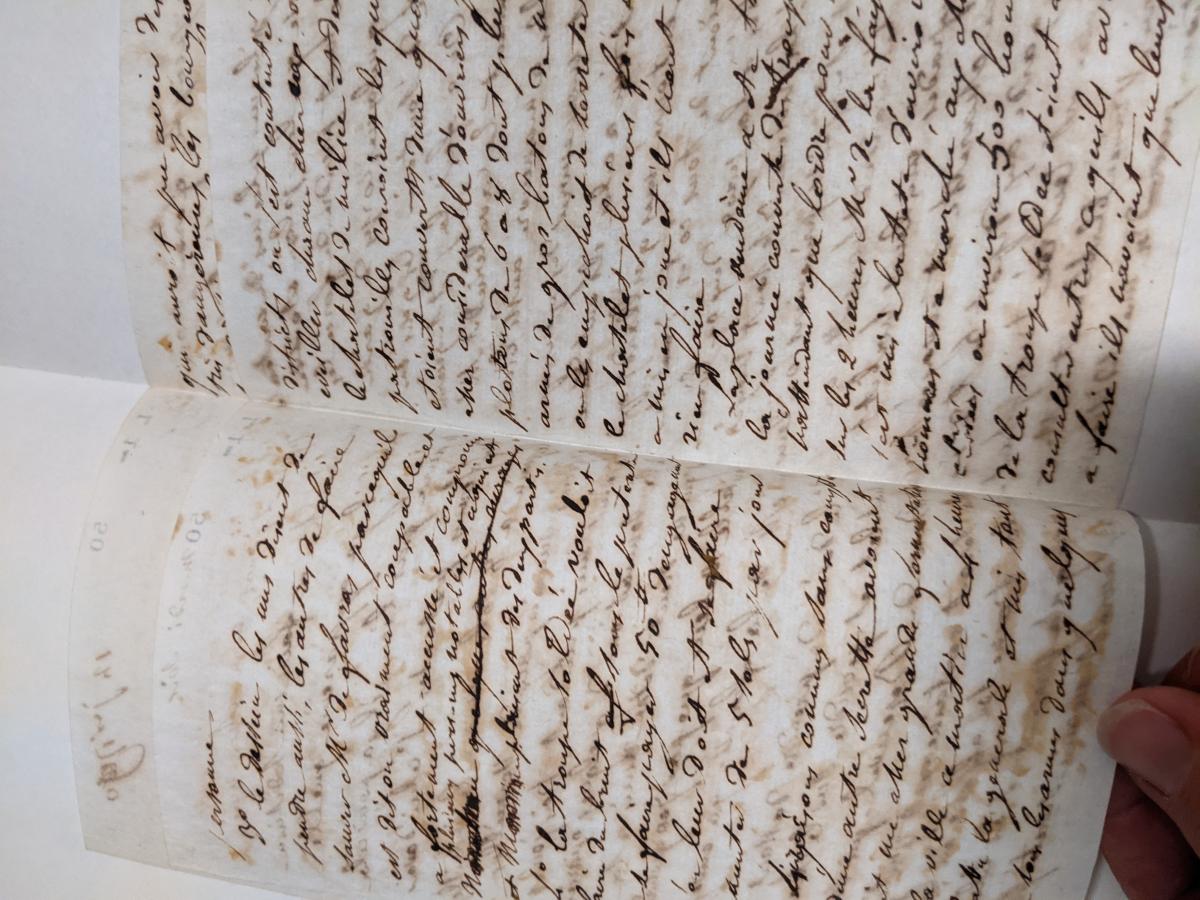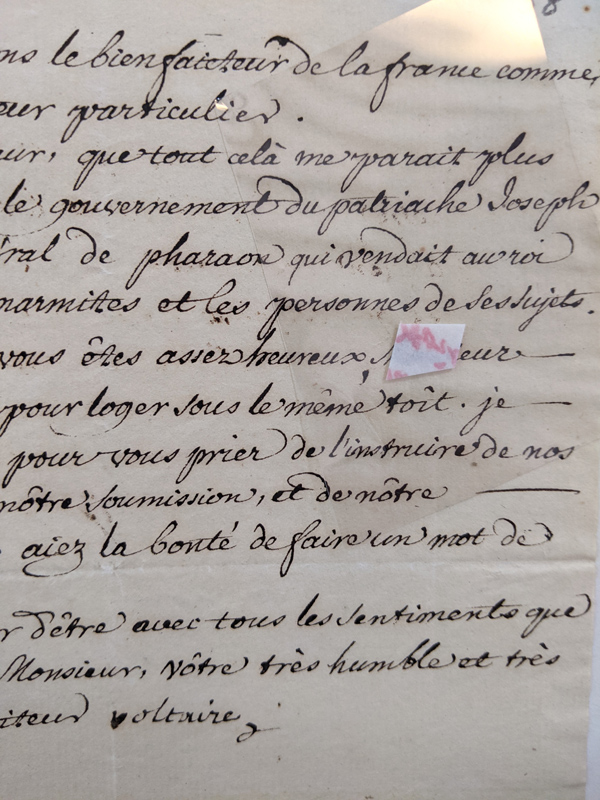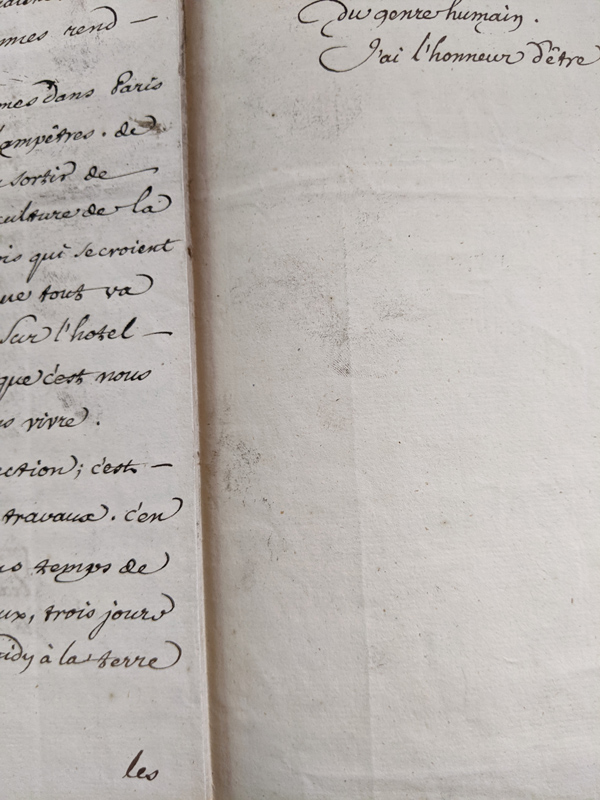
Hagley has many highly valued pieces of paper. Not the paper itself, but the writings and stories they contain are what holds value. Consider the manuscript letters housed at Hagley, which were originally the possessions of the du Pont family’s progenitors, including Pierre Samuel du Pont de Nemours, his wife, and sons. These assembled papers across centuries, storing hundreds of thousands of conversations among the du Pont family and noted politicians, nobility, philosophers, and scientists. Exploring the past through these artifacts involves looking deeply at the materiality of the items, as well as the words on the page. Looking at the evidence of their production and use are part of the conservation process.
To preserve these documents, we need to gain a better understanding of their condition. Keep in mind that we are talking about well over 1 million items! Where to start? The beginning, of course! When was that? In this case, the beginning is 1588, represented by a land deed from Rouen, France, where the du Ponts once lived. Most letters of concern date between 1750 and 1850, roughly the span of the life of du Pont de Nemours and his sons Victor and Eleuthère Irénée.
During this period, iron gall inks (IGI) were predominant on letters and legal documents. The iron component made the writing indelible unless it was forcibly removed by a sharp knife, which left behind a rough surface. This method of erasure leaves one type of evidentiary damage. The iron in the ink is the cause of another. With exposure to moisture in the air and physical handling, iron gall inks can leave holes (lacing) in the paper, a problem called iron gall ink corrosion.
To determine which inks are at greatest risk, conservators scrutinize the paper for halos around writing (lateral bleeding) and the sinking of inks to the opposite side.

IGI that has iron(II) ions is at risk of corrosion. A chemical test in the form of a paper strip can be used to identify the presence of these ions. This test strip paper turns pink when moistened and placed in contact with ink containing the deleterious component.
I used these test strips on some of the letters written by the French Enlightenment philosopher Voltaire to Pierre Samuel du Pont de Nemours. This ink appeared to be in good condition. There were no signs of lacing or halos in normal light (Ultraviolet light can be used to reveal ink migration). Still, the test strip detected a possible problem.

Yet another interesting find on a Voltaire letter was the presence of ink smudges. On closer inspection, these are clearly fingerprints. It would be exciting if these could be confirmed as Voltaire’s!

A conservation project to stabilize the inks and digitization to share these documents further afield are in the works. Maybe there are more Voltaire fingerprints out there to be found? (Very likely, considering the vast amount of his writing that exists.)
Laura Wahl is the Library Conservator at Hagley Museum and Library.
